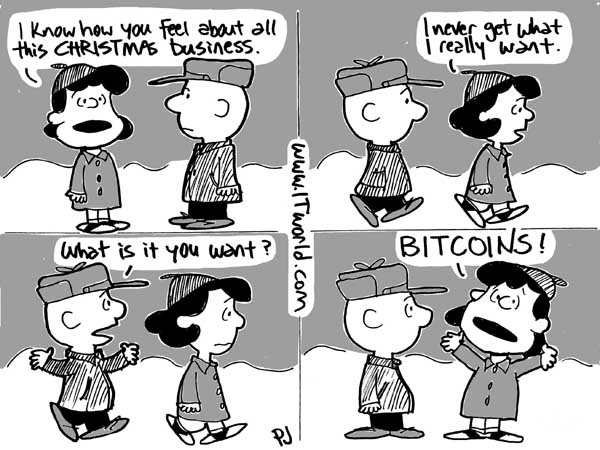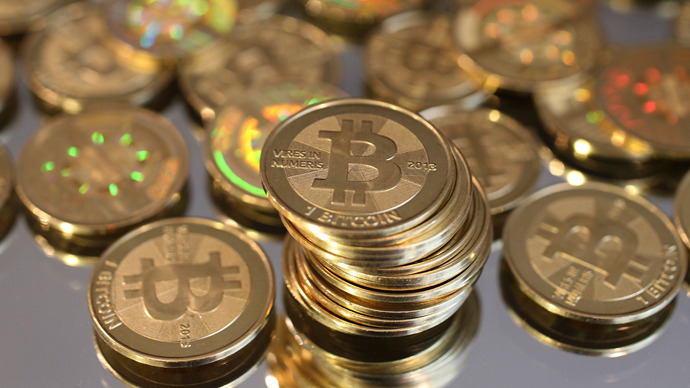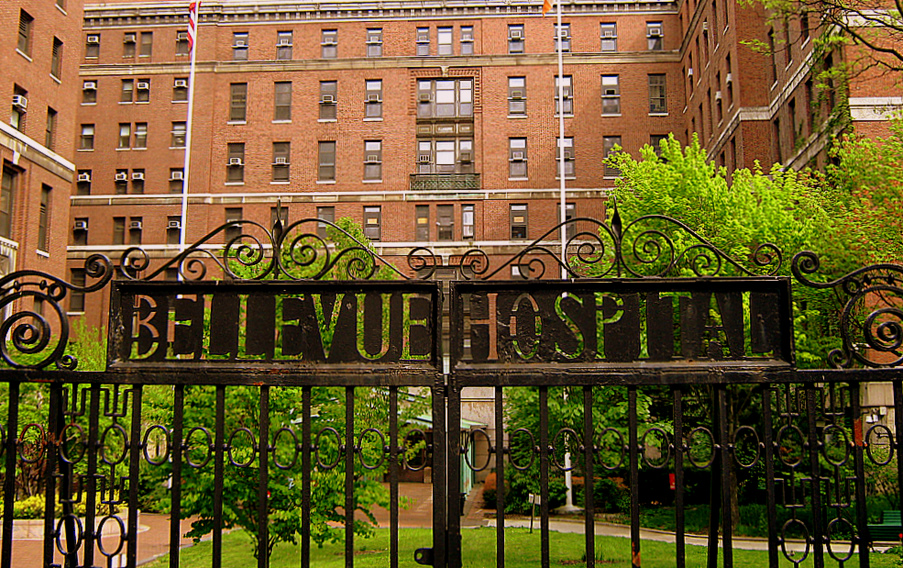
I met my friend Mark for lunch today at the Walnut Room. We sat near the windows and looked out at the gorgeous Chicago spring day.
“I bought flowers for my mom online for Mother’s Day,” said Mark. “At the checkout, there was an option to pay with bitcoin.” Mark is extremely skeptical about pretty much everything, so he was grumpy: it’s hard to be wary of Bitcoin when it helps you buy flowers for Mom.
“That’s great!” I said, clapping. “I bought a mattress on Overstock.com with bitcoin. Did you read PaperGirl yesterday? It was all about bit –”
“Yeah, yeah, I read it,” Mark said. “That’s why I brought it up. I have questions. How do you buy them?”
I welcomed the interrogation. It was with some trepidation I dove into all this yesterday; talking to Mark might help me iron out the second half of my bitcoin treatise.
“You can go to Coinbase.com, set up an account, and buy bitcoin,” I said, “Or you can buy bitcoin in person, from a trader. I went on LocalBitcoin.com and found a trader with a great customer rating and met him and bought bitcoin from him. It was easy. It was fun.” Mark knows that that trader was Yuri. So romantic, right?? I know.
“And you use real money to buy them,” Mark said, eyeing me. The waiter came and we both ordered the tortilla soup.
“Yes,” I said. “And they’re not actual coins, you realize. Each bitcoin is a line of code. And you put them –”
“Where do you put them?”
“In a bitcoin wallet, poodle. Just like you put cash or cards in a physical wallet, you put bitcoin in a digital wallet. Each bitcoin has its own serial number. Those numbers live in your phone or your computer. Remember, dollars have serial numbers too — and your credit card is a string of numbers — a lot of how bitcoin works we already use everyday.”
Mark shook his head. “What keeps someone from making up fake numbers? Making a fake bitcoin would be way easier than making a fake dollar bill, right? No paper. And is there a finite number of these things? Who invented it, anyway? And who’s profiting?!” Mark slurped his soup and then — with his mouth extremely full — he managed to say, “You’re never gonna be able to explain all this.”
I told him I’d try. And I’d keep it short, too.
In 2008, a programmer — possibly a group of programmers — known as Satoshi Nakamoto, wrote a brilliant piece of code and put it out on the Internet for free. Even the most dour of bitcoin critics agree: Nakamoto’s digital currency model was (is) genius. This is because his bitcoin model, among its other elegant features, got rid of two huge problems with buying goods and services online: 1) no longer did every single online transaction have to go through a bank or credit card company, with all their fees, security breaches, and data gathering; and b) he solved the problem of double-spending.
The first problem is easy to get your mind around, even if you don’t agree it’s a problem. Now, to that second thing. If you don’t have a bank or credit card company to vouch for you, to say, “Yeah, you really bought that llama — it shows it right here on your statement,” how can you prove you did? Equally bad — just as Mark worried — if someone, like a bank, isn’t monitoring the system, who’s to stop some guy from making all kinds of fake bitcoin and buying zillions of dollars worth of stuff (e.g., llamas) with fake money?
Nakamoto designed bitcoin so that the community of bitcoin users verify the transactions. Instead of a bank making one central ledger of what’s circulating, the bitcoin users do it, verifying all of the transactions — yep, every one of them — at the same time. There are a finite number of bitcoins in existence (21 million) and they all have a unique serial number or code. If someone tries to use a fake bitcoin, the transaction is caught as it tries to get through the system and it’s rejected. So there is regulation: it’s just in the hands of the people using the currency, not A Big Bank, not MasterCard or Visa. (We used to get along without those things, you know.) How all the verifications happen is rather complicated and computer-y and I am willing and able (more or less) to explain it. My fear is that I have asked much of you, gentle reader, and you have been most faithful; perhaps it’s wise to discuss that last bit (!) of the bitcoin system another day.
Two last things, and then let’s finish with the love story:
First, Bitcoin has a PR problem because in the beginning, the anonymity of the currency appealed to people buying nefarious things online. I hardly need to point out that as I type, lots of people are buying nefarious things, online and otherwise, with U.S. dollars, too. But this early sketchiness (and a trading company, Mt. Gox, that was doing bad business) dealt a harsh blow to bitcoin and it’s gonna be recovering from that for awhile. A few shady apples hurt the bunch, but as Bitcoin grows, matures, goes through a modicum of regulation, and problem-solves, these early specks will flick out. (Also: the “crypto” in “cryptocurrency” refers to the encrypted codes within the system, but people see “crypto” and register “cryptic” as in “confusing.” It’s not a perfect word, “cryptocurrency.”)
Lastly: Bitcoin is new. Really new. Anyone reading this is way ahead of most of the general public — and good for you! Curiosity and inquiry = great! More and more merchants are accepting the cryptocurrency for payment (e.g., Amazon, Gyft, Overstock, etc.) but until you can pay your energy bill online with it, bitcoin has a ways to go. It takes a village, but remember: the Internet itself was new not so long ago, and people were skeptical and cynical about it, too. Look where we are now.
One of the reasons I care so much for Yuri is because he wants to build the village. He believes in the ability of bitcoin to make the world a better place, so he works tirelessly for his company, a bitcoin trading firm in NYC. He is a miner. He goes out of his way to patronize businesses that accept bitcoin. He gets involved in the growing, global community and recently gave a lecture at his alma mater about his work. A person with a passion is a beautiful thing to behold. And to, you know, hold.
“I still don’t know,” Mark said, pushing his empty soup bowl away. “But I think it’s cool you tackled the topic. Good job.”
I thanked him, and paid the check. With my credit card.


